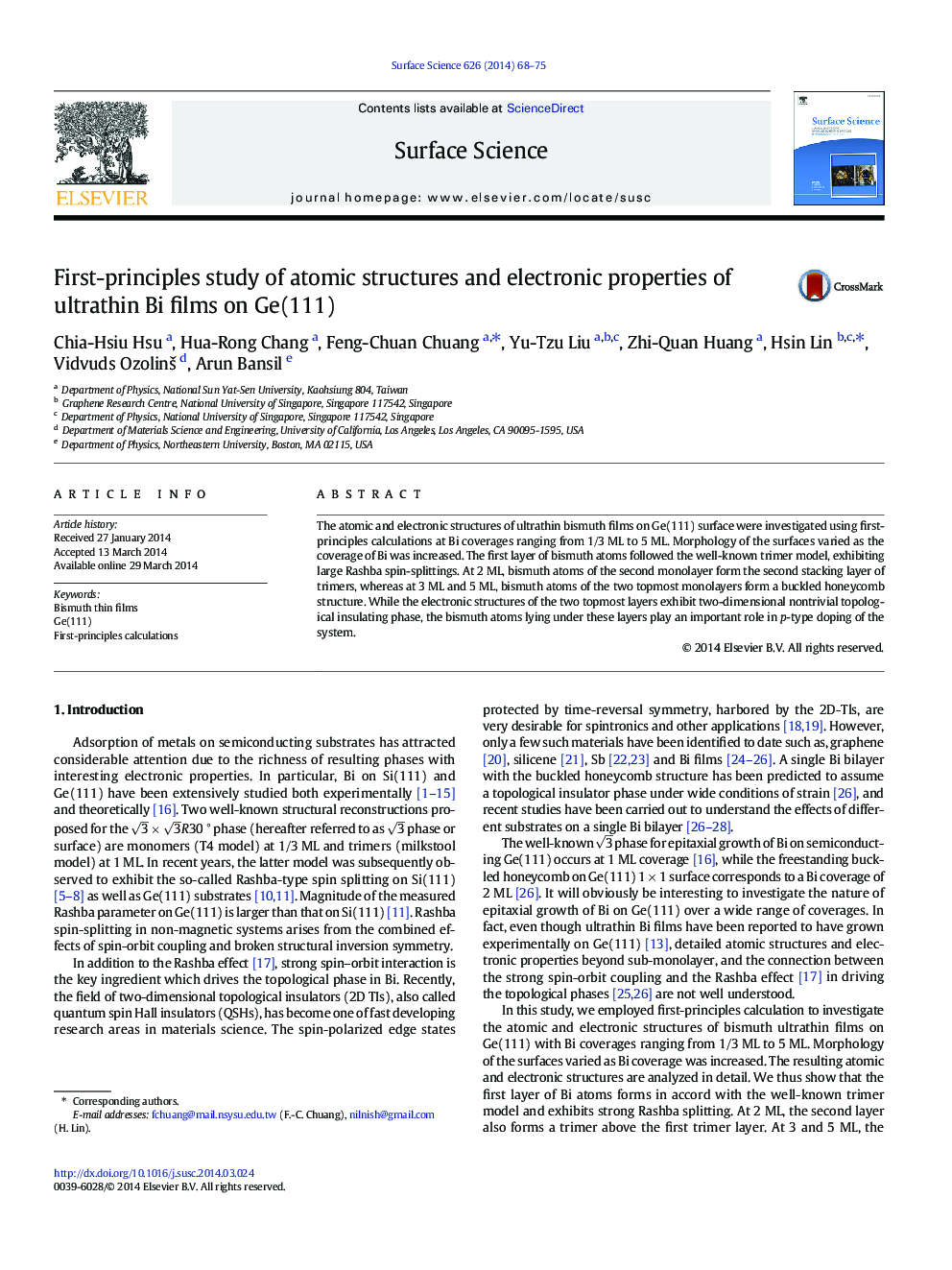| Article ID | Journal | Published Year | Pages | File Type |
|---|---|---|---|---|
| 5422099 | Surface Science | 2014 | 8 Pages |
Abstract
The atomic and electronic structures of ultrathin bismuth films on Ge(111) surface were investigated using first-principles calculations at Bi coverages ranging from 1/3Â ML to 5Â ML. Morphology of the surfaces varied as the coverage of Bi was increased. The first layer of bismuth atoms followed the well-known trimer model, exhibiting large Rashba spin-splittings. At 2Â ML, bismuth atoms of the second monolayer form the second stacking layer of trimers, whereas at 3Â ML and 5Â ML, bismuth atoms of the two topmost monolayers form a buckled honeycomb structure. While the electronic structures of the two topmost layers exhibit two-dimensional nontrivial topological insulating phase, the bismuth atoms lying under these layers play an important role in p-type doping of the system.
Related Topics
Physical Sciences and Engineering
Chemistry
Physical and Theoretical Chemistry
Authors
Chia-Hsiu Hsu, Hua-Rong Chang, Feng-Chuan Chuang, Yu-Tzu Liu, Zhi-Quan Huang, Hsin Lin, Vidvuds Ozolinš, Arun Bansil,
